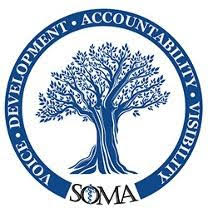› Forums › Spring 2021 Resolution Forum › Resolution: S-21-14: INTEGRATING TELEMEDICINE EDUCATION INTO OSTEOPATHIC CURRICULA
- This topic has 0 replies, 1 voice, and was last updated 3 years, 3 months ago by
Valerie Lile.
-
AuthorPosts
-
-
February 18, 2021 at 11:30 am #3521
Valerie Lile
KeymasterWHEREAS, both healthcare and technology are constantly evolving industries that necessitate a commitment to adaptability and growth; and
WHEREAS, the use of telemedicine has increased dramatically in the United States over the last several years and has proven to provide massive benefit to patients in terms of reducing travel time and risk, increasing access to healthcare, reducing costs and increasing convenience7; and
WHEREAS, the American Medical Association (AMA) has similarly recognized training is not widely offered and implemented policy to encourage the adoption of telemedicine training by medical schools and other institutions3, and
WHEREAS, the dynamic nature of the medical field has been highlighted over the last year in light of the SARS-CoV-2 pandemic as physicians and students alike have transitioned to an almost entirely virtual learning environment following the March 2020 AAMC guidance which strongly encouraged schools to remove medical students from direct patient care to protect students and the public from the virus8; and
WHEREAS, medical schools across the country have quickly adapted both their preclinical and clinical curricula to suit this new virtual environment but many have not implemented any formal training in the appropriate use of telemedicine in didactic or clinical curricula7; and
WHEREAS, more than 84% of US citizens report daily internet access5, including roughly 78% of rural United States citizens5 who may benefit most from the convenience and reduced costs associated with telemedicine; and
WHEREAS, “medical students have been shown to graduate feeling unprepared to utilize telemedicine effectively and feeling uninformed about the laws governing telemedicine use. At the same time, there is a growing appreciation among medical students that such training would be both relevant and important for their future work”7; and
WHEREAS, many concerns regarding telemedicine exist such as ensuring quality of care, privacy, data security, lack of personal relationships, etc.8; and
WHEREAS, “there is evidence to suggest direct-to-consumer telemedicine may lead to higher incidence of malpractice”1,2,6 which suggests a need for better training on the use of telemedicine; and
WHEREAS, “current medical students are among the first generation of ‘digital natives’ who are well versed in the incorporation of technology into social interaction”4 so exposure to telemedicine training during medical school may prove to be more effective than post-graduation training; and now, therefore, be it
RESOLVED, that the Student Osteopathic Medical Association address appropriate stakeholders to advocate for the inclusion of telemedicine training into the osteopathic curricula to expose students as early as possible to its practical application across specialties as well as its limitations.
Relevant Existing Policies: (The policy number of any relevant existing policies provided for reference)
SOMA Policy:
Policy of Other Organizations Named in the Resolved Statements (AOA/AMA/etc):
References
- Fogel, A. L., & Kvedar, J. C. (2019). Reported Cases of Medical Malpractice in Direct-to-Consumer Telemedicine. JAMA, 321(13), 1309–1310. Retrieved Feb 14, 2021, from https://doi.org/10.1001/jama.2019.0395
- Jumreornvong, O., Yang, E., Race, J., & Appel, J. (2020). Telemedicine and Medical Education in the Age of COVID-19. Academic medicine : journal of the Association of American Medical Colleges, 95(12), 1838–1843. Retrieved Feb 14, 2021, from https://doi.org/10.1097/ACM.0000000000003711
- Kelly J. (2016) AMA encourages telemedicine training for medical students, residents : American Medical Association. Retrieved Feb 14, 2021, from https://www.ama-assn.org/press-center/press-releases/ama-encourages-telemedicine-training-medical-students-residents
- Pathipati, A., Azad1, T., & Jethwani, K. (2016, July 12). Telemedical Education: Training Digital Natives in Telemedicine. Retrieved January 27, 2021, from https://www.jmir.org/2016/7/e193/
- Perrin, A., & Duggan, M. (2020, May 30). Americans Internet Access: Percent of Adults 2000-2015. Retrieved January 27, 2021, from https://www.pewresearch.org/internet/2015/06/26/americans-internet-access-2000-2015/
- Uscher-Pines, L., Mulcahy, A., Cowling, D., Hunter, G., Burns, R., & Mehrotra, A. (2016). Access and Quality of Care in Direct-to-Consumer Telemedicine. Telemedicine journal and e-health : the official journal of the American Telemedicine Association, 22(4), 282–287. Retrieved Feb 14, 2021, from https://pubmed.ncbi.nlm.nih.gov/26488151/
- Waseh, S., & Dicker, A. (2019, April 8). Telemedicine Training in Undergraduate Medical Education: Mixed-Methods Review. Retrieved January 27, 2021, from https://www.ncbi.nlm.nih.gov/pmc/articles/PMC6475822/
- Weiner, S. (2020, April 15). No classrooms, no clinics: Medical education during a pandemic. Retrieved January 27, 2021, from https://www.aamc.org/news-insights/no-classrooms-no-clinics-medical-education-during-pandemic
Submitted by:
Haley Williams, OMS-II – Lincoln Memorial University DeBusk College of Osteopathic Medicine, Harrogate
Ricky Curry, OMS-II – Lincoln Memorial University DeBusk College of Osteopathic Medicine, Harrogate
Robert Foucart, OMS-II – Lincoln Memorial University DeBusk College of Osteopathic Medicine, HarrogateAction Taken:
Date:
Effective Time Period:
-
-
AuthorPosts
- The forum ‘Spring 2021 Resolution Forum’ is closed to new topics and replies.
